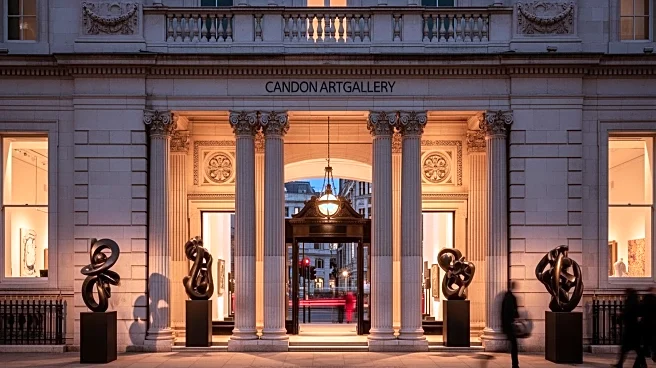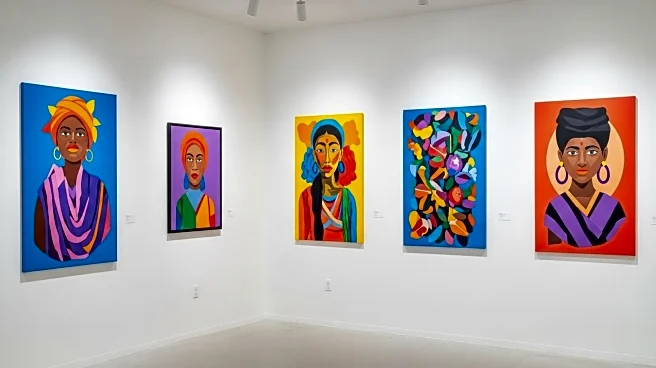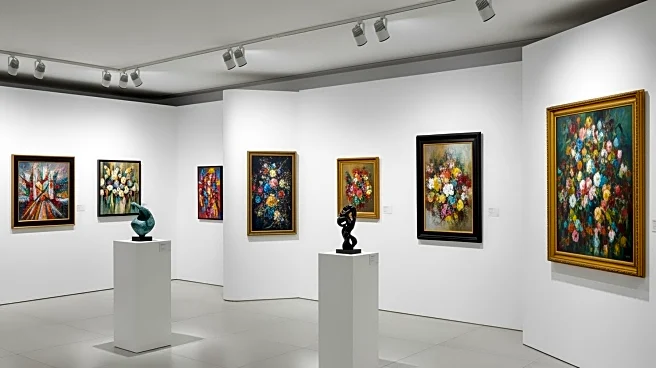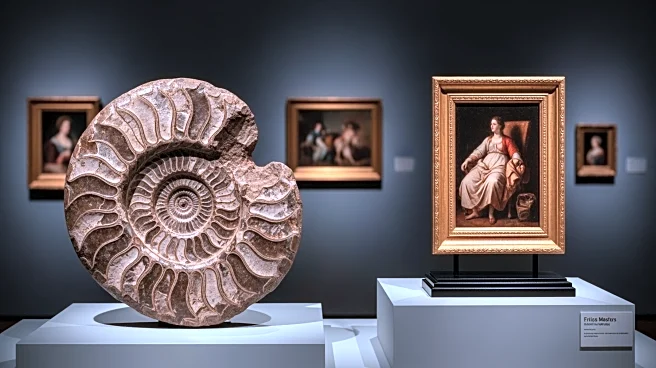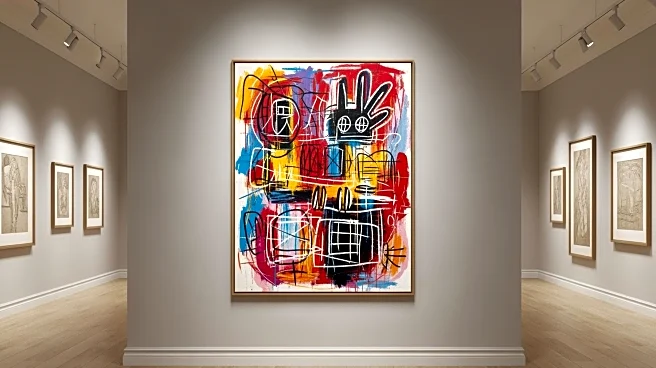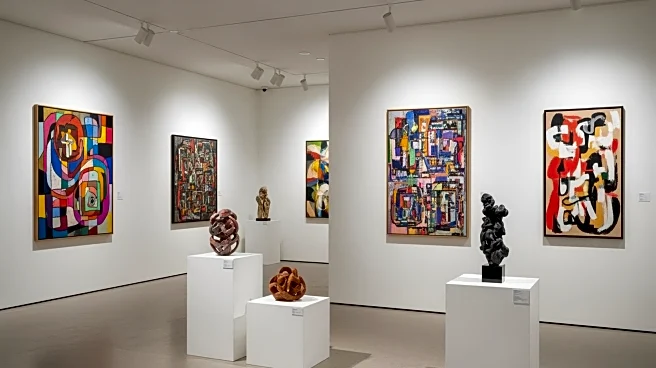What's Happening?
Art galleries are increasingly turning to merchandise as a strategy to maintain engagement and financial stability in the face of declining art market values. According to recent reports, the art market experienced a 12% drop in value last year, totaling
$57.5 billion. To counteract this, galleries are exploring alternative revenue streams, such as selling art-related merchandise. This approach is exemplified by the Lyndsey Ingram gallery in London, which hosted a unique exhibition featuring hand-stitched felt items, attracting significant visitor interest despite lower financial returns compared to traditional art sales. The gallery's owner, Lyndsey Ingram, emphasizes the importance of joy and engagement over financial gain, suggesting a shift in strategy for galleries and auction houses towards more experiential offerings.
Why It's Important?
The shift towards merchandise and experiential offerings in art galleries highlights a broader trend in the art industry, where maintaining public interest and engagement is becoming increasingly crucial. As traditional art sales face challenges, galleries are seeking innovative ways to attract visitors and sustain their operations. This trend could lead to a more diverse and accessible art market, where the focus is on creating memorable experiences rather than solely on high-value transactions. By embracing merchandise, galleries can potentially reach new audiences and foster a deeper connection with art, which may help sustain the industry during economic downturns.
What's Next?
As galleries continue to explore merchandise and experiential offerings, the art market may see a diversification in the types of exhibitions and events hosted. This could lead to collaborations with artists who specialize in creating unique, interactive experiences. Additionally, galleries might invest in marketing strategies that emphasize the cultural and emotional value of art, rather than just its financial worth. Stakeholders in the art industry, including artists, collectors, and gallery owners, will likely monitor these developments closely to assess their impact on market dynamics and audience engagement.
Beyond the Headlines
The move towards merchandise and experiential offerings in art galleries may also have ethical implications, as it challenges traditional notions of art valuation and authenticity. By prioritizing engagement and joy, galleries could redefine the relationship between art and commerce, potentially influencing how art is perceived and valued in society. This shift might encourage a more inclusive and democratized art world, where diverse voices and creative expressions are celebrated.


